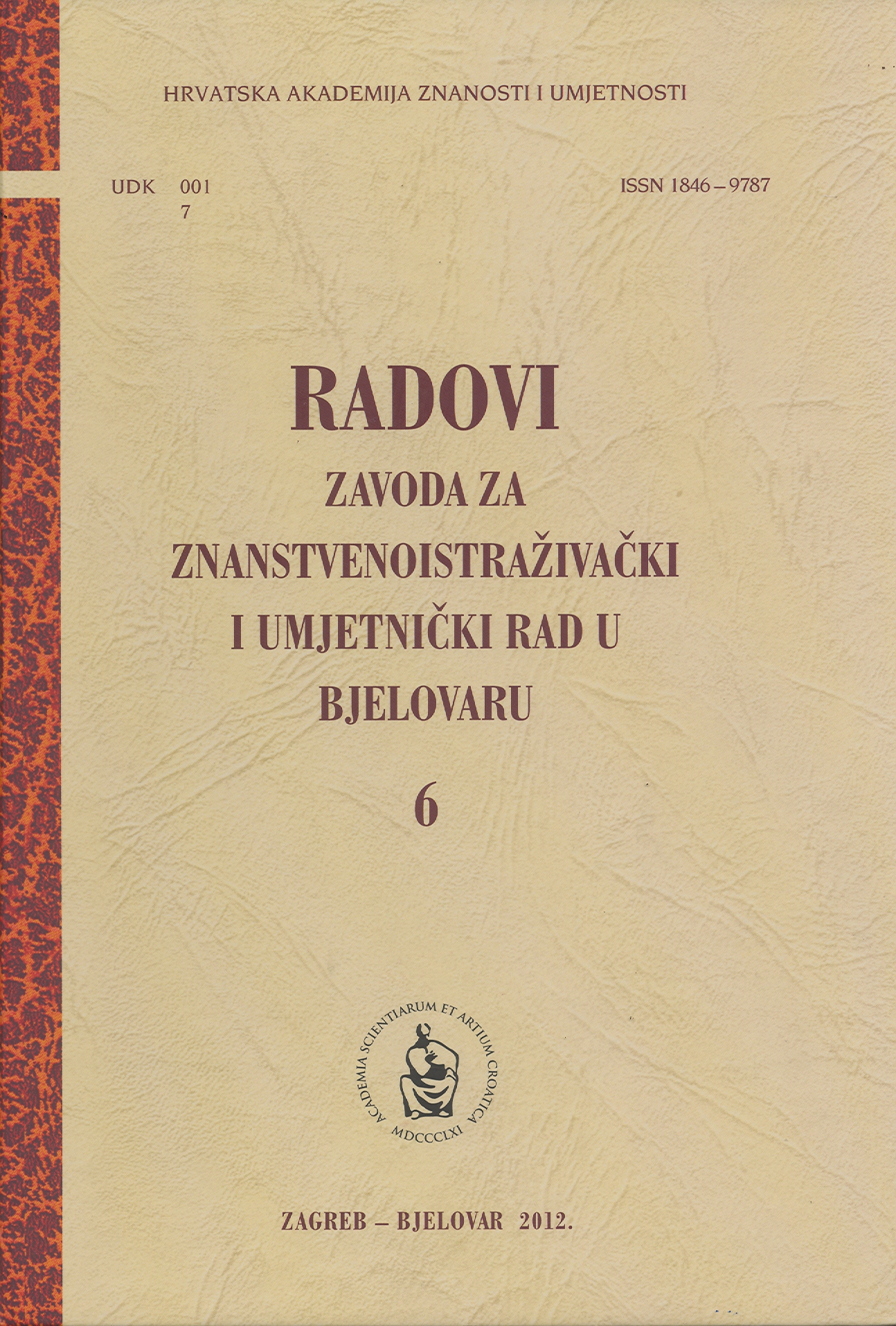Razvoj poljoprivrede primjenom navodnjavanja u Bjelovarsko-bilogorskoj županiji
Agricultural Development Achieved by Melioration in the Bjelovar-Bilogora County
Author(s): Franjo TomićSubject(s): Economy, Agriculture, Energy and Environmental Studies
Published by: Hrvatska akademija znanosti i umjetnosti - Zavod za znanstvenoistraživački i umjetnički rad u Bjelovaru
Keywords: agriculture; melioration; soil; water; arable land; farm culture;
Summary/Abstract: Farmers in the world, who materialise modern and economically justified agricultural production, have introduced melioration on their farmland. Although there are farmersproducers in the Bjelovar-Bilogora County who apply more advanced technologies and have a successful production, they are only the minority among agricultural producers. A further advancement of those farmers and all other producers depends upon investments in the melioration system and its professional implementation. By melioration, the crop rotation changes. The effect is a broader structure of sowing the farming, feeding and vegetable cultures, industrial plants and fruit cultures. The Bjelovar-Bilogora County is located in the Pannonian region. Its area figures out at 263,914 ha and numbers 144,042 inhabitants. Agricultural areas amount to 55.6 % or 146,855.4 ha. Farming rests upon grain, milk and meat production. The development of melioration will enable more advanced farming, which will further facilitate the development of other economic branches. In this county, only 0.37 % of arable land is meliorated, while in Croatia, this figure is approximately 1.0 %. In the world, 18.0 % of arable land is meliorated, and in Europe 13.0 %. During the vegetation period, this county has a shortage of 281.4 mm of water, so that the majority of cultivated farm cultures need meliorating. The prospects for the implementation of melioration are good. In the county area, as much as 57,254.7 ha of soil is suitable for melioration, and there are enough existing and even more potential water capacities. The water would partly be used from the river Česma, partly from the underground waters, while the major part would come from the existing and envisaged accumulations. It is foreseen by the melioration plan for this measure to be implemented on 7,690 ha or approximately 5.0 % of arable land. Economic analyses show that the total costs of melioration equal 37,000 HRK/ha, while the profit depends on the cultivated culture. E.g. in the very first year, the profit from the cropping of paprika equalled 62,201 HRK/ha, and the profit from the cropping of pears 42,318 HRK/ha. Thus, it may rightfully be expected that the agriculture supported by melioration will become a basis in the development of both the Bjelovar-Bilogora County and the Republic of Croatia.
Journal: Radovi Zavoda za znanstvenoistraživački i umjetnički rad u Bjelovaru
- Issue Year: 2012
- Issue No: 6
- Page Range: 1-15
- Page Count: 15
- Language: Croatian

